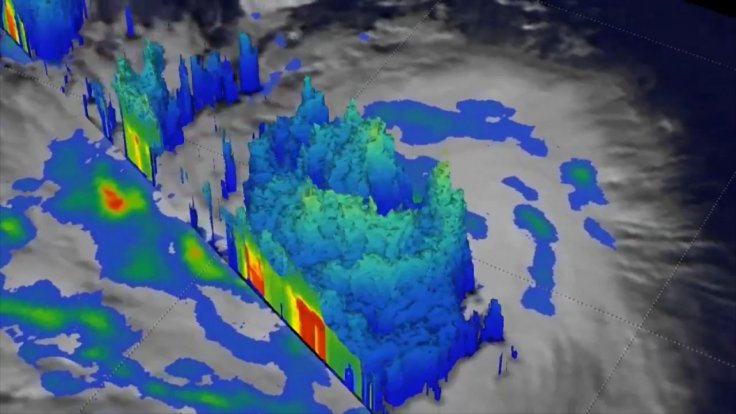
Hurricanes or tropical storms, known by different names according to the basin of origin and the speed they travel with, wreak havoc as they strike the coasts and leave a huge impact on the life and property of the region.
A Hurricane is a rapidly rotating storm system, which has a low-pressure center or eye, a closed low-level atmospheric circulation, strong winds, and a spiral arrangement of thunderstorms traveling at a speed of 75 to 200 miles per hour.
Also known as typhoon in the western Pacific, hurricanes form in the tropics just north and south of the equator, where the ocean water is warm, and help move heat from warm tropical places to the cooler temperate zone. They bring along a number of hazards, including heavy rains, high winds, a storm surge, and even tornadoes.
Often, named beautifully, the names of hurricanes differ from the harm they leave behind. In fact, the naming process of a hurricane is as interesting as naming any celestial body. Hurricanes on earth are named by one of eleven meteorological services and retain their names throughout their lifetime to provide ease of communication between forecasters and the general public.
For hurricanes, there is a list of names which are used on a six-year rotation. A 2019 list will be reused in 2025. The only time that there is a change is if a storm is so deadly or costly that the future use of its name on a different storm would be inappropriate.
Atlantic hurricane names for 2019 are Andrea, Barry, Chantal, Dorian, Erin, Fernand, Gabrielle, Humberto, Imelda, Jerry, Karen, Lorenzo, Melissa, Nestor, Olga, Pablo, Rebekah, Sebastien, Tanya, Van, and Wendy.
Similarly, Eastern North Pacific hurricane names for 2019 are Alvin, Barbara, Cosme, Dalila, Erick, Flossie, Gil, Henriette, Ivo, Juliette, Kiko, Lorena, Mario, Narda, Octave, Priscilla, Raymond, Sonia, Tico, Velma, Wallis, Xina, York, and Zelda.
Following are some of the deadliest hurricanes in the past.
- Fifi Orlene Hurricane that struck Jamaica, Central America and Mexico between September 14 and 24 in 1970 led to a damage of $1.8 billion and left at least 8,210 persons dead. Most of the loss of life and damage occurred in Honduras where rainfall from the hurricane triggered widespread flash flooding and mudslides. To avoid spread of post-storm diseases, the government allowed the burning of bodies.
- Category 5 hurricane on the Saffir-Simpson Hurricane Scale, Mitch is the second deadliest hurricane in Atlantic on record. In October 1998, Mitch killed up to 19,000 persons, with at least 7,000 deaths in Honduras alone, and damaged property worth $6.08 billion in Central America, Yucatan Peninsula, and South Florida.
- Jeanne, a category 3 Hurricane struck The Caribbean and Eastern US and left damages of $7.94 billion and killed 3037 people in September 2004. As a result of its impact, the name Jeanne was retired in the spring of 2005, by the World Meteorological Organisation's hurricane committee, and will never again be used for an Atlantic hurricane. t was replaced with the name Julia ahead of the 2010 Atlantic hurricane season.
- Hurricane Katrina, a category 5 hurricane on August 2005, is the costliest hurricane on record. It killed 1836 persons and damaged property worth $125 billion in the Bahamas, Cuba, eastern Canada, and the United States Gulf Coast, with Louisiana being the worst affected. Katrina was directly responsible for 1,170 fatalities in Louisiana, according to a follow-up study by the Louisiana Department of Health and Hospitals.
- Category 5 Hurricane Maria in September 2017 damaged property of $96.1 billion in Dominica and Puerto Rico. It is regarded as the worst natural disaster in recorded history to affect those islands and was also the deadliest Atlantic hurricane since Mitch in 1998. It is also the costliest hurricane in Puerto Rican history. A year after the deadly hurricane, Puerto Rico revised its official death toll of 64 up to 2,975. At least 3059 people were killed in the hurricane.









